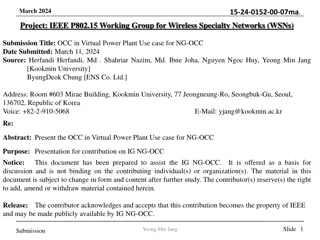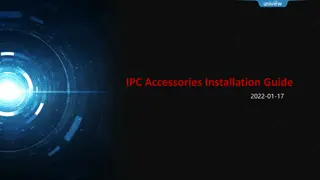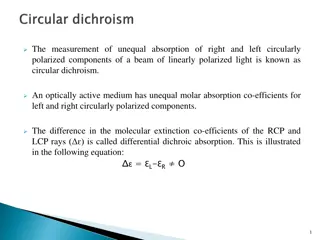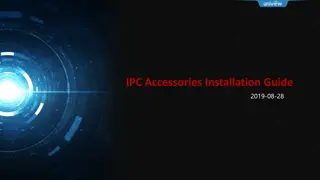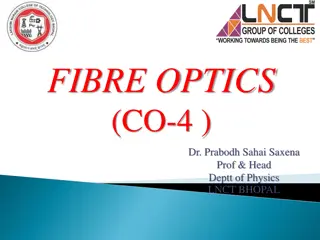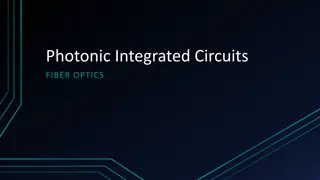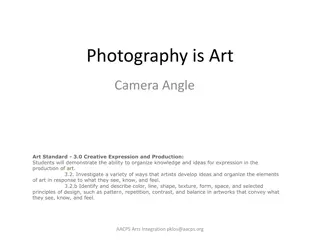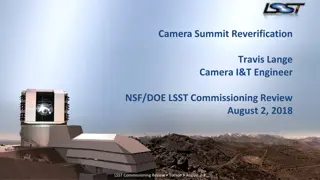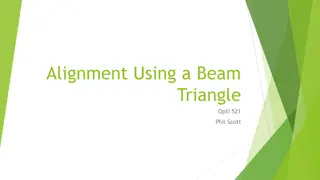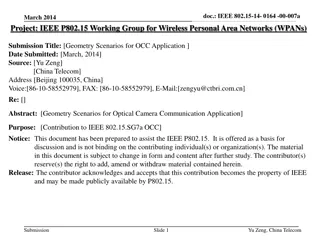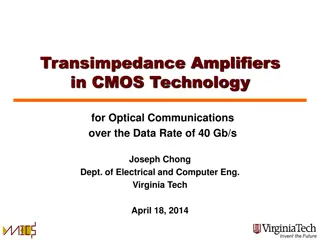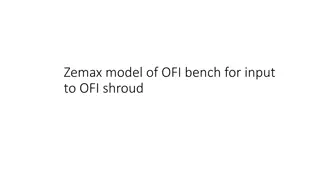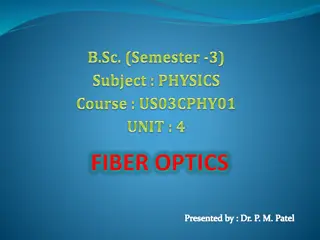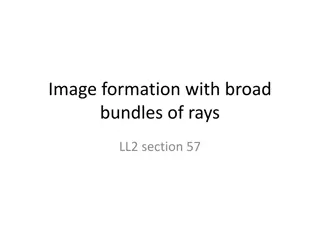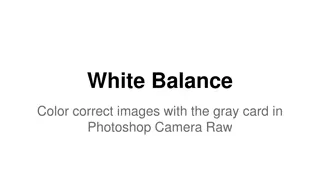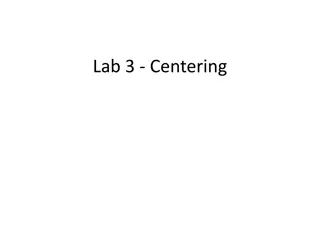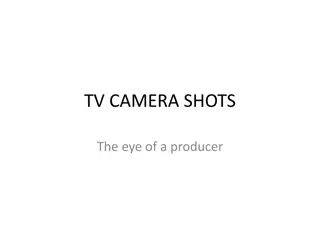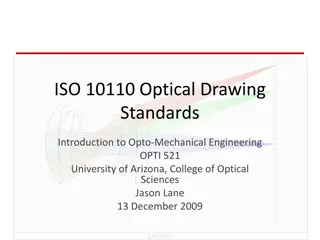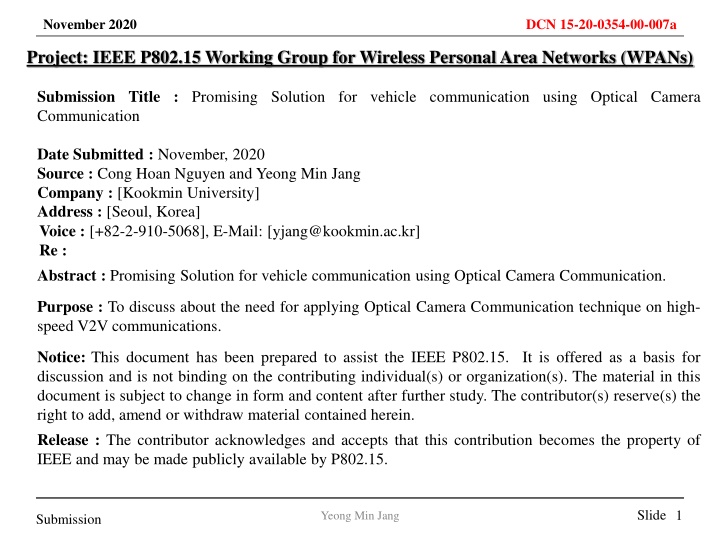
Innovative Vehicle Communication via Optical Camera Technology
Explore the application of Optical Camera Communication for high-speed vehicle-to-vehicle communication in the IoV system, presenting advantages and potential standards. This promising solution utilizes LED light modulation received by cameras, creating a comprehensive V2X communication architecture.
Download Presentation

Please find below an Image/Link to download the presentation.
The content on the website is provided AS IS for your information and personal use only. It may not be sold, licensed, or shared on other websites without obtaining consent from the author. If you encounter any issues during the download, it is possible that the publisher has removed the file from their server.
You are allowed to download the files provided on this website for personal or commercial use, subject to the condition that they are used lawfully. All files are the property of their respective owners.
The content on the website is provided AS IS for your information and personal use only. It may not be sold, licensed, or shared on other websites without obtaining consent from the author.
E N D
Presentation Transcript
November 2020 DCN 15-20-0354-00-007a Project: IEEE P802.15 Working Group for Wireless Personal Area Networks (WPANs) Submission Title : Promising Solution for vehicle communication using Optical Camera Communication Date Submitted : November, 2020 Source : Cong Hoan Nguyen and Yeong Min Jang Company : [Kookmin University] Address: [Seoul, Korea] Voice: [+82-2-910-5068], E-Mail: [yjang@kookmin.ac.kr] Re : Abstract : Promising Solution for vehicle communication using Optical Camera Communication. Purpose : To discuss about the need for applying Optical Camera Communication technique on high- speed V2V communications. Notice: This document has been prepared to assist the IEEE P802.15. It is offered as a basis for discussion and is not binding on the contributing individual(s) or organization(s). The material in this document is subject to change in form and content after further study. The contributor(s) reserve(s) the right to add, amend or withdraw material contained herein. Release : The contributor acknowledges and accepts that this contribution becomes the property of IEEE and may be made publicly available by P802.15. Slide 1 Yeong Min Jang Submission
November 2020 DCN 15-20-0354-00-007a Promising Solution for vehicle communication using Optical Camera Communication Slide 2 Yeong Min Jang Submission
November 2020 DCN 15-20-0354-00-007a Introduction Optical Camera Communications (OCC) OCC is modulating an LED light with data bits that can be received by a camera, which then decodes the bits and extracts the data. Today we have millions of devices enabled to receive visible light communications via the camera, but we lack standards to describe the modulation format. This contribution discusses some OCC topics of interest. Slide 3 Yeong Min Jang Submission
November 2020 DCN 15-20-0354-00-007a Introduction Slide 4 Yeong Min Jang Submission
November 2020 DCN 15-20-0354-00-007a Optical camera communication for vehicle system The main parts of IoV consist of communication between vehicle-to-vehicle (V2V), vehicle-to-infrastructure (V2I), vehicle-to-cloud (V2C), vehicle-to-sensors (V2S), and vehicle-to-personal devices (V2P). This whole system can be defined as vehicle-to everything (V2X) communication. A general architecture of V2X is illustrated in figure Slide 5 Yeong Min Jang Submission
November 2020 DCN 15-20-0354-00-007a Optical camera communication for vehicle system Slide 6 Yeong Min Jang Submission
November 2020 DCN 15-20-0354-00-007a Advantages of OCC Wireless OCC Main advantages of OCC: High interference No interference Power consumption is very small and low cost for devices. Bluetooth only offers limited data rate. Higher data rate It provides high security field of view. Zero interference. Communication range up to 100m. High communication range up to 200m Massive connectivity. Short life time Communication can be done within long time Higher life time. Stable connectivity even when the distance is increased. It can only connect limited devices at once Smartphone cameras can be used as receiver Not harmful for human body. It can lose connection in certain conditions Can lose connection if light is blocked Camera used in OCC system have already installed in factory. Harmful for human body Not harmful at all <Compare OCC with Wireless Connection> Slide 7 Yeong Min Jang Submission
November 2020 DCN 15-20-0354-00-007a Conclusion Optical camera communication (OCC) is an excellent complementary solution to its radio frequency (RF) counterpart. OWC technologies have been demonstrated to be able to support high traffic generated by massive connectivity of the Internet of Things (IoT) and upcoming 5th generation (5G) wireless communication systems. OCC system already had standardized. Slide 8 Yeong Min Jang Submission

